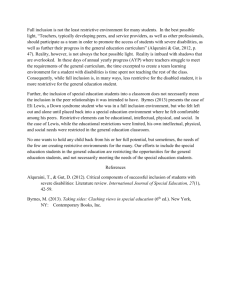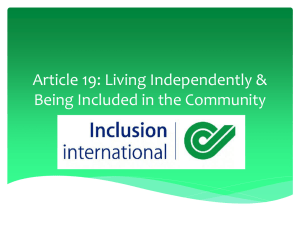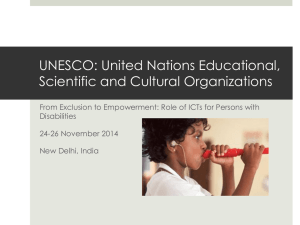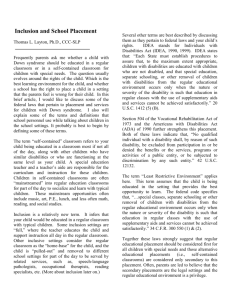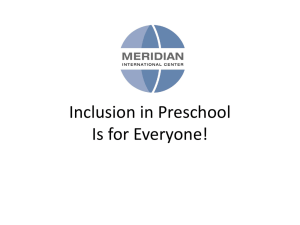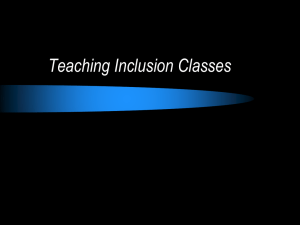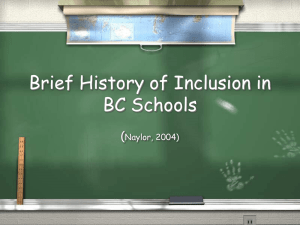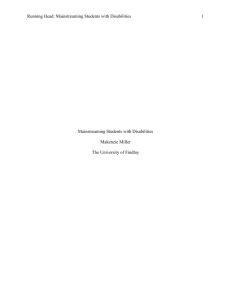File
advertisement
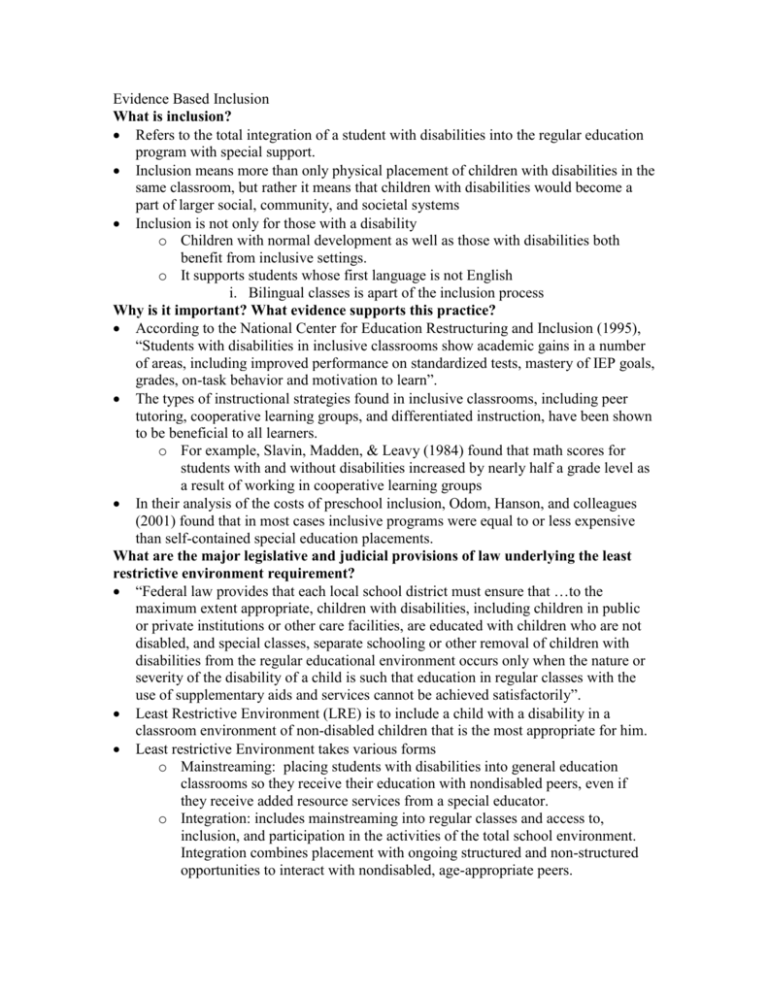
Evidence Based Inclusion What is inclusion? Refers to the total integration of a student with disabilities into the regular education program with special support. Inclusion means more than only physical placement of children with disabilities in the same classroom, but rather it means that children with disabilities would become a part of larger social, community, and societal systems Inclusion is not only for those with a disability o Children with normal development as well as those with disabilities both benefit from inclusive settings. o It supports students whose first language is not English i. Bilingual classes is apart of the inclusion process Why is it important? What evidence supports this practice? According to the National Center for Education Restructuring and Inclusion (1995), “Students with disabilities in inclusive classrooms show academic gains in a number of areas, including improved performance on standardized tests, mastery of IEP goals, grades, on-task behavior and motivation to learn”. The types of instructional strategies found in inclusive classrooms, including peer tutoring, cooperative learning groups, and differentiated instruction, have been shown to be beneficial to all learners. o For example, Slavin, Madden, & Leavy (1984) found that math scores for students with and without disabilities increased by nearly half a grade level as a result of working in cooperative learning groups In their analysis of the costs of preschool inclusion, Odom, Hanson, and colleagues (2001) found that in most cases inclusive programs were equal to or less expensive than self-contained special education placements. What are the major legislative and judicial provisions of law underlying the least restrictive environment requirement? “Federal law provides that each local school district must ensure that …to the maximum extent appropriate, children with disabilities, including children in public or private institutions or other care facilities, are educated with children who are not disabled, and special classes, separate schooling or other removal of children with disabilities from the regular educational environment occurs only when the nature or severity of the disability of a child is such that education in regular classes with the use of supplementary aids and services cannot be achieved satisfactorily”. Least Restrictive Environment (LRE) is to include a child with a disability in a classroom environment of non-disabled children that is the most appropriate for him. Least restrictive Environment takes various forms o Mainstreaming: placing students with disabilities into general education classrooms so they receive their education with nondisabled peers, even if they receive added resource services from a special educator. o Integration: includes mainstreaming into regular classes and access to, inclusion, and participation in the activities of the total school environment. Integration combines placement with ongoing structured and non-structured opportunities to interact with nondisabled, age-appropriate peers. o Full inclusion: In full inclusion, the student’s primary placement is in the regular education class. The student has no additional assignment to any special class for students with disabilities. Accessible References Videos Including Samuel, chronicles the Habib family’s efforts to include Samuel (diagnosed with cerebral palsy,) in every facet of their lives. The film honestly portrays his family’s hopes and struggles as well as the experiences of four other individuals with disabilities and their families. https://www.youtube.com/watch?v=92zvN0tmFKY&feature=youtu.be&hd=1 Readings Inclusion of Children With Disabilities or Other Special Needs Healthy Children, Strong Families, Caring Communities by Child Action Inc. The Exceptional Child: Inclusion in Early Childhood Education by Eileen Allen and Glynnis Cowdery National Center for Education Statistics What is the role of an ECE Lead Teacher? To ensure a partnership in learning with your students, parents, and other professionals Listen to the child, and be objective rather than subjective Work in the best interest of the child and what their needs are. Credentials And Contact Information Miss Sway-Anne Rowe Early Childhood Educator, Lead Teacher Pre-Kindergarten M.A. Birth- 2nd Early Childhood Special Education: Hunter College Email: tt24@schools.nyc.gov Phone: 212- 566-1234
